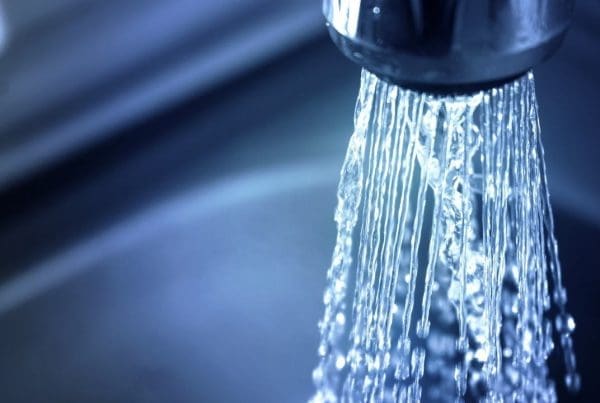If you live in an area with hard water, you probably already know how difficult it can be to get clean and soft water. Water softeners have been around for decades, and they’re still one of the best ways to get rid of those annoying mineral deposits that build up on everything from your shower doors to your dishwasher. However, salt-free systems are a relatively new development in water treatment technology—and they don’t actually soften water! So what exactly are salt-free systems? Are they effective? And should you consider installing one in your home or business? Let’s find out.
Water softener systems remove minerals from hard water.
Anion-exchange water softeners use a process called ion exchange to remove hard minerals such as calcium and magnesium. Salt is added to the system, which then uses electricity to remove the minerals from your water by passing it through a resin bed filled with tiny beads that cling to the minerals. When the beads are full of mineral buildup, they’re removed from the resin bed and replaced with new ones.
The resin is also made of tiny beads that cling to the hard minerals and remove them from your water. The beads are soft, so they don’t damage pipes or fixtures.
You may also need to clean the resin bed if it gets clogged with mineral buildup. This can be done by removing the beads and running water through them, removing most of the minerals before they’re replaced in their original position.
Salt-free water softeners, however, are not actually softeners.
Salt-free water softeners, however, are not actually softeners. While they do remove some hardness from your water (usually less than 30%), they don’t actually soften it. Many salt-free systems do little more than make the minerals present in your water feel softer on your skin or clothes—the same way soap does—and require you to add a specific amount of detergent to each load of laundry to compensate for the lack of natural cleaning agents in the water itself.
Furthermore, salt-free systems aren’t as effective at removing hardness minerals as traditional salt-based softeners; they also don’t remove as much calcium, magnesium, or sodium from the supply line and taps in your home.
Salt-free water softeners do have one advantage over salt-based systems—they don’t require you to add any more salt to your home’s water supply. This is especially important if you live where water supplies are naturally high in minerals or getting additional bags of salt delivered regularly is difficult.
There are several different types of salt-free water softeners on the market, including ion exchange and reverse osmosis systems. Both types work by filtering your water supply through membranes that remove calcium, magnesium, and other hard minerals—but reverse osmosis systems remove much more than ion exchange ones. In addition to filtering out the hard minerals in your water supply line, reverse osmosis systems also filter out any remaining chemicals or contaminants that may be present in it as well.
Many salt-free water softeners use a process called ionization.
Ionization is a process that uses electricity to produce ions. An ion is an atom or molecule with a positive or negative charge, and it’s important to note that ions are not the same as atoms or molecules without an electric charge. This is because the number of electrons in an atom determines its overall charge.
The most common ionization method used in salt-free water softeners is carbonate formation. When an electrically charged particle passes through the solution, it pulls other negatively charged particles along (this phenomenon is called electrophoresis). As these negatively charged particles are removed from the solution’s surface and move towards the positively charged particle, they lose their electric charges—and become carbonates!
Don’t get a salt-free system if you want the best solution for actual soft water.
Salt-free softeners are not the best option if you want to get soft water. A better alternative is an ion exchange system. Ion exchange systems don’t use salt or any other chemicals. Instead, they use special resin beads that replace chemicals with minerals like sodium and calcium in the groundwater. This makes the water more neutral and helps prevent scale build-up on your pipes and fixtures inside your home.
Ion exchange systems are also more efficient than salt-based softeners because they reduce waste by keeping only as much hardness in your water as you need for daily usage. Suppose you have hard well water or a high concentration of minerals in your local groundwater supply. In that case, an ion exchange system can help remove these minerals so that there’s less wasted brine (the liquid created when removing hardness from water).
An ion exchange system is one of the most popular water softeners, but it’s not the only available option. You can also pair it with a reverse osmosis system, which uses pressure to force water through tiny pores in a membrane. This process removes all minerals and contaminants from your drinking water, leaving you with pure H2O.
Salt-free water softeners don’t soften water or don’t remove many minerals you would want to be removed.
If you’re looking for a product that will truly soften your water and remove harmful minerals from it, then a salt-based water softener is the way to go!
The process is very similar to what happens with a traditional water softener, but instead of using sodium chloride (salt), this type of system uses potassium chloride instead.
Don’t get a salt-free system if you’re in the market for a water softener system and want the best solution for actual soft water. Instead, you should check out our reviews of other methods that can actually soften hard water and remove unwanted minerals. For water softeners or any other water treatment equipment, give C and J Water a call!




